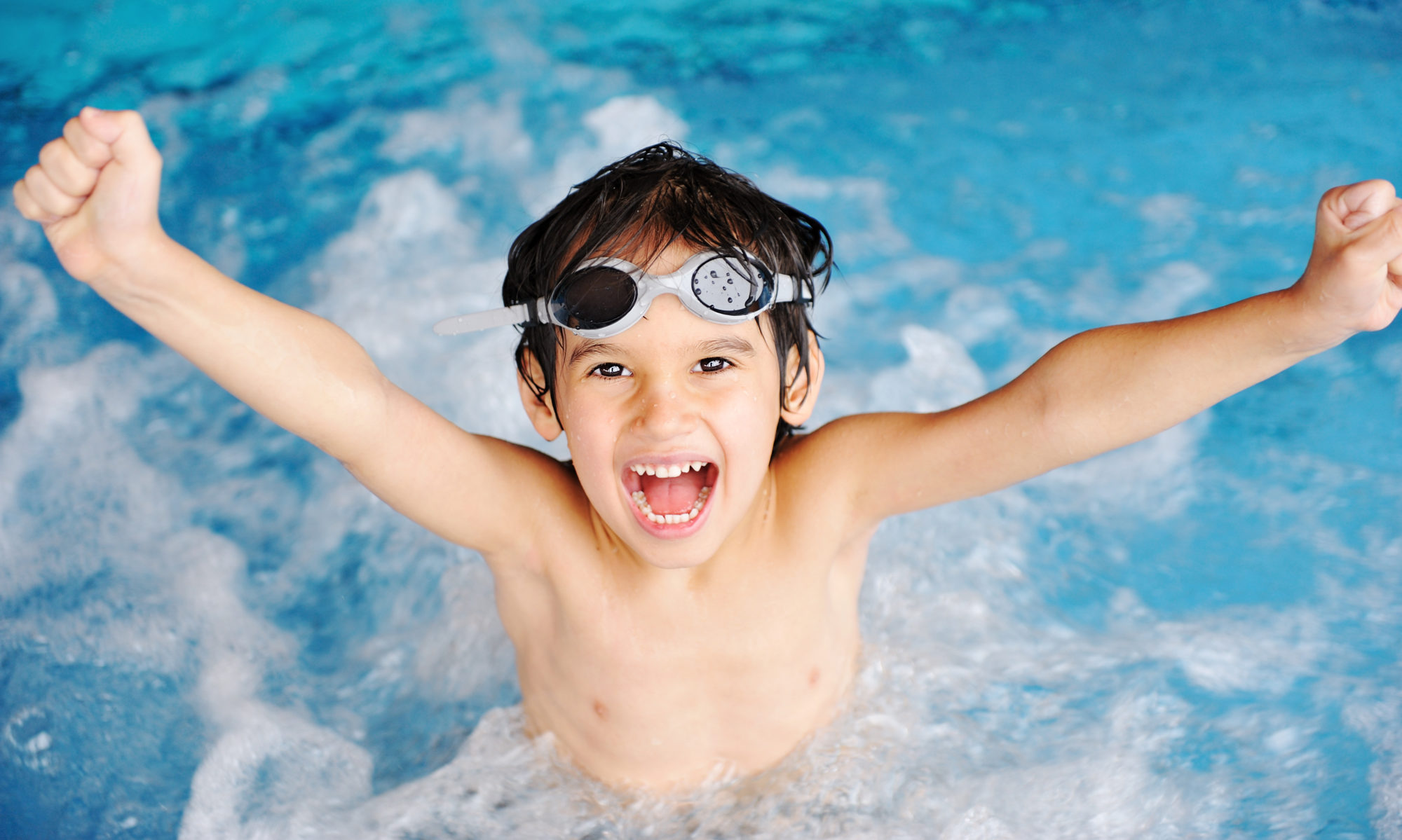You can start teaching your kids the swimming kick before you even get wet. Once you’re ready to move the swimming lesson into the pool, here’s how to teach this swimming skill.
How (and How Not) to Teach Your Kids the Swimming Kick
Now that you’re in the pool, where do you start?
Why Fins Won’t Help Your Kids Learn to Kick
Fins can help kids without much buoyancy to keep their legs and hips in line with their torsos as they learn to use their arms in the water; however, long-term, they’ll become a crutch, and they’ll alter the quality and feeling of the movement in a way that doesn’t help when your child is learning to kick. You can use fins during the early stages of learning to swim when your child is focusing on other skills, but don’t use fins when your child is practicing kicking.
Where to Start Teaching the Swimming Kick
Practicing the kick at the stairs is a good place to start because it lets your child hold his body even with the surface easily. If he’s not using the stairs to support himself, support him with one arm under his belly and the other hand holding his hands.
How to Support Your Child When You’re Teaching Him to Kick
Have him hold his face in the water, and ask him to squeeze your hand whenever he wants to come up for a breath. When he does, he can press down on his hands to help himself lift his head. You can help him by holding the hand that’s holding his firm.
It’s Time to Move
Walk around the pool as he practices. Remind him to flick his feet like he’s trying to kick off his shoes. Choose one of the six aspects of the swimming kick to focus on at a time.
